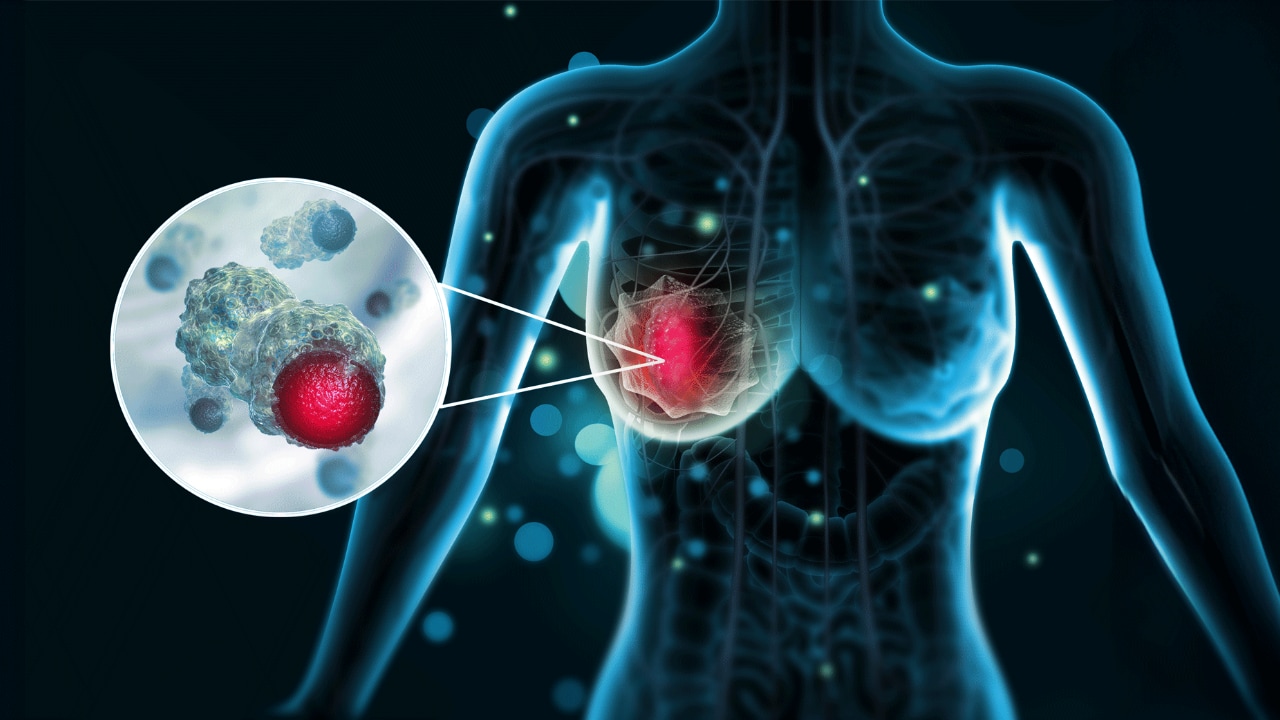Materials and Methods
Patients
Serum samples were collected from patients enrolled in a phase I-II, open-label study of liposomal doxorubicin (Evacet; Elan Corp., Stevenage, UK) and paclitaxel (Bristol Myers Squibb, Princeton, NJ, USA) in combination with whole breast hyperthermia for the neoadjuvant treatment of LABC (stage IIB or stage III). This trial required informed consent and was conducted under the approval of the Duke University Institutional Review Board. Protocol-eligible patients were treated with the combination of Evacet, paclitaxel, and hyperthermia every 3 weeks. The hyperthermia procedure has been described previously.[25]
Following neoadjuvant therapy, patients received appropriate surgical removal of their primary breast tumor as well as axillary lymph node dissection. Immediately after surgery, patients underwent radiation therapy followed by an additional eight cycles each of 21-day standard dose cyclophosphamide (600 mg/m2), methotrexate (40 mg/m2), 5-fluorouracil (600 mg/m2) and appropriate hormonal therapy.
The clinical trial accrued a total of 47 patients. Three patients were deemed nonevaluable because of failure to complete all four cycles of the neoadjuvant portion of the trial. The clinical characteristics of the patient study group are presented in Table 1 .
Collection and Storage of Blood Serum. Serum samples were obtained prior to the start of neoadjuvant therapy (pretreatment), prior to cycles 2, 3, and 4 of neoadjuvant therapy, and prior to definitive surgery. Blood was drawn using standard phlebotomy procedures and was collected without anticoagulant. Blood was allowed to coagulate for up to 2 hours at room temperature. Sera were separated by centrifugation, immediately aliquoted, frozen, and stored at -80°C. No more than two freeze-thaw cycles were allowed for any sample.
Multiplexed Bead-based Immunoassay
The xMAP™ bead-based technology (Luminex Corp., Austin, TX, USA) permits simultaneous analysis of numerous analytes in a single sample. Fifty-five bead-based xMAP™ immunoassays for a variety of serum biomarkers were utilized in the present study ( Table 2 ).
Assays for ErbB2, epidermal growth factor receptor (EGFR), CA 15-3, carcinoembryonic antigen, Cyfra 21-1, CA 19-9, CA 72-4, α-fetoprotein, mesothelin, insulin-like growth factor binding protein 1, human kallikrein 10, and HE4 were developed in the UPCI Luminex Core Facility.[26] The inter-assay variability of each assay was 5% to 11%, and the intra-assay variability was 2% to 9%. Assays for MMP-2 and MMP-3 were obtained from R&D Systems (Minneapolis, MN, USA), assays for MIP-1β, eotaxin, IP-10, IL-2R, IL-1Rα, IL-6R, DR5, TNF-RI, and TNF-RII were obtained from Invitrogen (Camarillo, CA), and the remaining assays were obtained from Millipore/Linco Research (St Charles, MO, USA). Overall, eight different multiplexed panels were used.
Multiplex Analysis
Assays were performed according to the manufacturers' protocols. Luminex Core Facility assays were performed as described previously.[27] Samples were analyzed using the Bio-Plex suspension array system (Bio-Rad Laboratories, Hercules, CA, USA). Biomarker expression levels were expressed as median fluorescent intensities generated by analyzing 50 to 100 microbeads for each analyte in each sample. The concentrations of analytes were quantitated from median fluorescence intensities using standard curves generated by Bio-Rad five-parameter curve fitting) to the series of known concentrations for each analyte.
Statistical Analysis
Clinical Response. The Mann-Whitney nonparametric t test was used to evaluate the significance of differences in serum biomarker levels expressed as the median fluorescence intensity between treatment response groups separated by treatment timepoints. The level of significance was taken as P < 0.05. For multivariate analysis of biomarker combinations, a CART classification tree[28,29,30] diagnostic model was created. The Statistical Analysis System (SAS version 9: SAS Institute, Inc., Cary, NC, USA) was used to fit the logistic regressions using PROC LOGISTIC. The best subset for each size panel of analytes was identified through the brand and bound algorithm of Furnival and Wilson.[31] This algorithm maximizes the score function over all possible combinations of analytes for any given size panel. The Statistical Analysis System was also used to fit the logistic regressions and to identify the best subsets for each size panel of biomarkers. Panels were generated from size 1 to size 10.
Sensitivities were estimated for specificities of 90%, 95%, and 98% by ranking the predicted fit for each control subject, determining the cutoff points corresponding to these levels of specificity, and applying the cutoff points to the ranked predictions for the alternative treatment response group. To minimize overfitting bias, leave-one-out cross-validation was used. The MATLAB routines treefit and treeval were used. For panel selection, markers were selected incrementally. Given an existing subset of the markers, each marker was considered a potential addition to the panel. We began with no markers and added until little additional progress was made.
Pathologic Response. Within each timepoint of treatment, biomarker expression values - expressed as the median fluorescence intensity - were adjusted by the following procedure. Quantile normalization was performed using the normalize BetweenArrays function (limma package) in R,[32] missing values were filled in using k-nearest neighbor imputation, and values were log-transformed.
Normalized values were filtered according to a univariate, two-sided t test. From this filtered set, values were progressively included and excluded from a stepwise regression model. The final logistic regression model was then subjected to leave-one-out cross-validation to assess the predictive value.
Breast Cancer Res. 2008;10(3) © 2008 BioMed Central, Ltd.
Cite this: Serum Biomarker Profiles and Response to Neoadjuvant Chemotherapy for Locally Advanced Breast Cancer - Medscape - May 12, 2008.











Comments